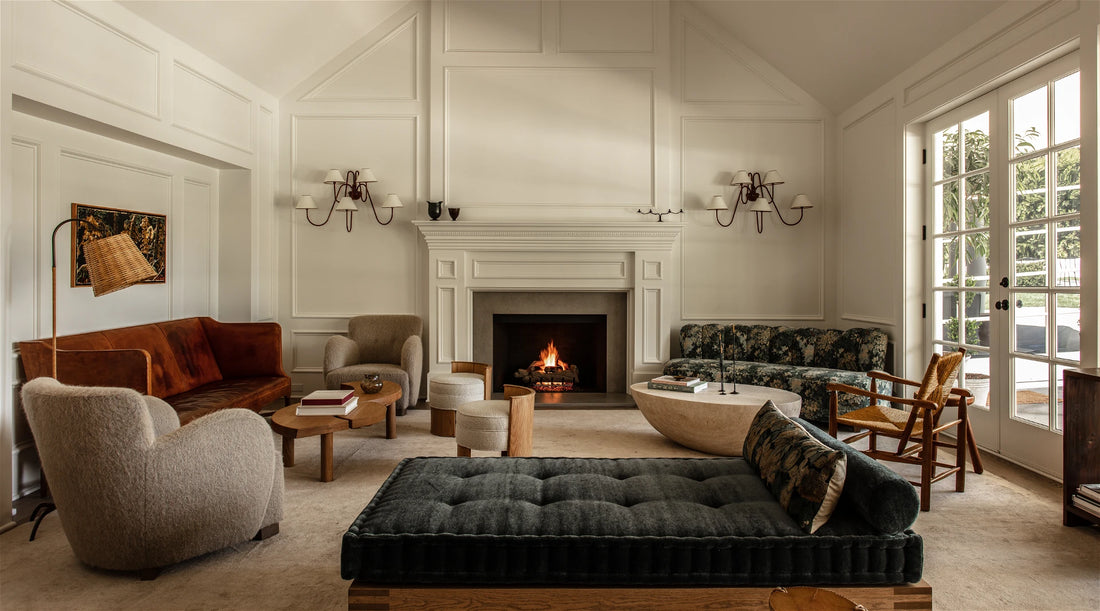
How to choose the right color scheme for your living room?
Choosing the perfect color scheme for your living room is a pivotal step in creating a space that truly feels like home. It's more than just selecting colors that look good together; it's about crafting an atmosphere that aligns with your style, personality, and the overall vibe you want to achieve. Here's a comprehensive guide on how to choose the right color scheme for your living room, ensuring a harmonious and visually appealing result.
Understanding Color Psychology: Color has a profound impact on our emotions and perceptions. Before diving into specific color combinations, it's essential to understand the basics of color psychology. Warm tones like reds and yellows evoke energy and warmth, while cool tones like blues and greens promote calmness and tranquility. Neutrals such as whites, grays, and browns provide a timeless and versatile backdrop.
Consider the Room's Purpose: The function of your living room plays a crucial role in determining the ideal color scheme. If it's a space for relaxation and unwinding, soothing hues like soft blues or muted greens might be appropriate. For a lively and sociable atmosphere, warmer tones such as earthy reds or inviting yellows can be invigorating.
Assessing Natural Light: The amount of natural light the room receives is a key factor in color selection. In well-lit spaces, you have more flexibility to experiment with darker or bolder colors. However, in rooms with limited natural light, lighter shades can help create an illusion of space and brightness.
Choosing a Dominant Color: Start by selecting a dominant color for the room. This is usually the color of the walls and the largest piece of furniture, such as the sofa. Neutral tones like beige, gray, or white are popular choices for walls as they provide a versatile canvas for other elements in the room.
Introducing Accent Colors: Once you have your dominant color, it's time to introduce accent colors. These are hues that will add interest and personality to the space. Consider incorporating complementary colors for visual contrast or analogous colors for a more harmonious look. Accessories like throw pillows, rugs, and artwork are great opportunities to bring in these accent shades.
Experimenting with Patterns and Textures: Don't limit yourself to solid colors. Mixing patterns and textures can add depth and visual interest to your living room. Consider combining striped or geometric patterns with solid colors to strike a balance. Textured fabrics like wool or linen can enhance the tactile experience of the space.
Drawing Inspiration from Existing Elements: Look around your living room for inspiration. Consider the existing colors of your furniture, flooring, and any architectural features. Choose a color scheme that complements these elements rather than clashing with them. This ensures a cohesive and unified design.
Staying Timeless vs. Embracing Trends: Decide whether you want your living room to have a timeless appeal or if you're open to embracing current trends. Neutral color schemes tend to be timeless and adaptable to evolving styles, while bold and trendy colors can make a statement but may require more frequent updates.
Testing Samples Before Committing: Before committing to a color scheme, test paint samples on your walls. Colors can look different in various lighting conditions, so observe how they appear during different times of the day. This step is crucial in ensuring that the chosen colors achieve the desired effect in your specific space.
Seeking Professional Advice: If you find yourself overwhelmed or unsure, don't hesitate to seek the advice of a professional interior designer. They can provide insights based on their expertise and experience, guiding you towards choices that align with your vision and preferences.
In conclusion, choosing the right color scheme for your living room involves a thoughtful consideration of color psychology, the room's purpose, natural light, and existing elements. Whether you opt for timeless neutrals or embrace bold trends, the key is to create a space that resonates with your personality and fosters the atmosphere you desire. Remember, it's not just about following trends but crafting a living room that feels uniquely yours.
